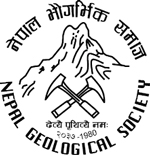General information
Jointly organized with the Nepal Geological Society (NGS) 
Conference flyer (PDF download)
Rare or catastrophic events, such as large earthquakes, extreme storms, tsunamis, floods, wildfires, or volcanic eruptions, can have complex and long-lasting effects on Earth surface processes and biogeochemical cycles, potentially dominating system dynamics over long time scales. These events may induce immediate perturbations to the Earth surface that when integrated over time may be more significant than the more frequent background processes. These events are also likely to trigger process cascades and multiple feedback loops that affect landscapes on distinct spatial and temporal scales. This conference will bring together scientists studying a range of rare/extreme events and their broader impacts on Earth surface processes, biogeochemical cycles and human systems. We invite scientists working on such topics to share their research findings and also their experiences in monitoring and post-event fieldwork.
The conference shall stipulate multidisciplinary discussions on the time and length scales of different types of events. We plan to organize a conference with enlightening keynote presentations, research talks and lots of space for discussions and posters. In order to provide the ideal conditions for the topic we will take you to Nepal and as part of the conference program visit a region that has been buffeted by an earthquake, catastrophic outburst flood, mega landslide and annual monsoon storms in the recent years.
Conference themes will include:
- the adjustment of Earth surface processes to event-driven perturbations,
- commonalities and differences between events of different types,
- magnitude, length- and time scale of impact,
- feedbacks between different systems that can enhance post-event impacts
- tipping points in Earth surface systems which yield into instability or irreversibility.